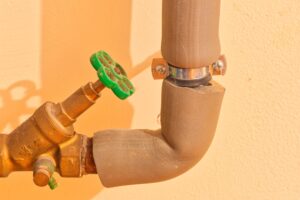Dangerously cold temperatures have settled across Iowa, bringing a host of other problems with them. One that we’re dealing with here in Osceola is frozen water pipes.
 When exposed to freezing temperatures for an extended period of time – anywhere from 1-3 days, depending on the temperature – any water or liquid trapped in pipes can freeze and expand. The ice then puts pressure on the walls of the pipe, causing it to rupture when the pressure gets to be too much. Pipes in exterior walls are usually the most affected, but with the current temperatures, any pipes are at risk.
When exposed to freezing temperatures for an extended period of time – anywhere from 1-3 days, depending on the temperature – any water or liquid trapped in pipes can freeze and expand. The ice then puts pressure on the walls of the pipe, causing it to rupture when the pressure gets to be too much. Pipes in exterior walls are usually the most affected, but with the current temperatures, any pipes are at risk.
There are ways to protect your property from this kind of trouble, however. Winterizing your home, whether owned or rented, through small steps and preventative measures can mitigate the risk of frozen pipes and catastrophic damage.
For Homeowners:
- Insulate Pipes and Plumbing Fixtures: Start with exposed pipes in unheated areas of your home, such as the basement, attic, or crawl spaces. Use pipe insulation or heating tape to prevent freezing.
- Seal Leaks and Cracks: Inspect windows, doors, and any openings in your home’s exterior for leaks. Seal them with weatherstripping or caulk to keep the cold air out and the warm air in, reducing the risk of freezing pipes.
- Protect Outdoor Water Sources: Disconnect and drain hoses and shut off outdoor water sources. Consider installing frost-free hose bibs to prevent freezing or insulating outdoor faucets with covers.
- Maintain a Consistent Temperature: Set the thermostat to a minimum temperature to ensure that the interior remains warm enough to prevent freezing, whether you’re home or away. This is crucial for vacant properties or vacation homes.
- Consider installing a Water Leak Alarm: These alarms are designed to detect and alert homeowners to potential water leaks or flooding, providing an early warning system that can help prevent extensive damage and costly repairs.
For Renters:
- Communicate with the Landlord: Establish open communication to ensure that the landlord is aware of any existing issues or concerns and inquire about any specific actions they plan to take or will allow to winterize the property.
- Implement Temporary Fixes: You may not have control over major structural changes, but you can use weatherstripping on windows and doors, install draft stoppers, and make use of heavy curtains to insulate against the cold.
- Use Space Heaters Cautiously: If your rental property is inadequately heated, consider using space heaters. However, exercise caution and follow safety guidelines to prevent fire hazards. Also, discuss any plans to use space heaters with your landlord to ensure compliance with the lease agreement.

